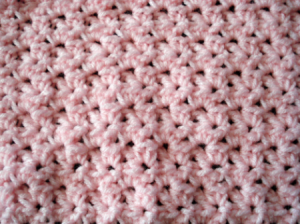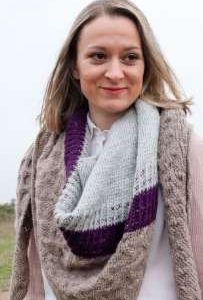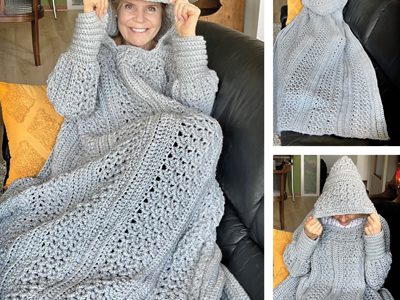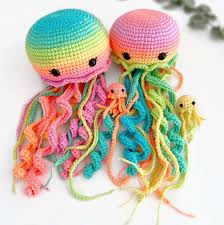I believe that all crocheters are designers. Most of us tweak a pattern to suit our needs and tastes. Many, like me, find a pattern to be merely a suggestion – a hint as to how to proceed, hoping to wind up with something that resembles the finished product from from the established pattern. In that way, I have created many unique projects, from doilies to sweaters, from afghans to scarves. I came late onto the art of crochet, having learned to crochet only at age 50. But, I’m pretty adventurous. Once I mastered the basics, I began to experiment with all the elements of any pattern I was attempting to reproduce. Sometimes, a pattern is just wrong, full of errors. More likely, in my case, I simply read the pattern wrong and proceed accordingly. There was that one cardigan that I completed, thinking I had followed the pattern, only to have a friend look at it and laughingly tell me that I had shorted each portion of the stitch pattern by one stitch. Oh well. I was consistent, so it worked out. I gotta be more careful.
This is a pattern that I followed perfectly. And, I fell in love with it. It makes a reversible fabric that can be reproduced in any yarn, using a suitable hook. My initial project was a babyghan. Then I made a scarf. I assumed I’d tire of this stitch pattern as I have so many before. But, no, not this time. I had been looking for a stitch pattern to make a shawl for myself, a shawl with no ‘tail’. I had tested a variety of stitch patterns and had been disappointed with them for any number of reasons, difficult to increase evenly, looked too much like other shawls I’d seen, required an edging or blocking. An edging and blocking are not deal breakers for me, but I prefer not to block soft fibers used for garments. Then I decided to experiment with the stitch pattern used in the addictive Baby’s Best Bumpy Blanket.
Bingo! I had the perfect combination of yarn, stitch pattern, easy progressive increases at both ends of each row, and a nice, tidy edge that looked fine without any special edging. And, I wrote down the pattern! ‘My’ stitch pattern relies heavily on the Baby’s Best which is worked as a square or rectangle. The only changes that make it ‘mine’ are the increases and the cute, simple edging I added to the bottom edge of the shawl. This one works up quickly!
You can follow my pattern and make one for yourself or a gift in no time. I used Wool-Ese yarn and a J hook which created a very snuggly, thick, warm fabric that will be easy care. But, you can make yours in any yarn you desire, using an appropriately sized crochet hook. It took 4 skeins of Wool-Ese (197 yards per skein) and I used a bright blue color called Colonial Blue. This would work up nicely in a fingering or lace weight yarn or something a lot chunkier. Count on using about 800 yards in worsted weight with a I or J hook. I’m stuck on these wonderful Tulip Etimo hooks and the J just felt right with this yarn. The finished fabric has a spongy feel which I love, making it snuggly and warm as I said. It’s also a roomy fit for me. I’m about 5’3″ and wear a size 16 or Large in most tops. I also prefer a shawl to hit me at the elbow level as I find this allows the shawl to remain in place while I move about.
My pattern:
I used 4-5 skeins of Wool-Ese worsted weight yarn and a J hook
Chain 28 plus 3 for turning (so chain 31)
1. Sc, hdc, dc in 4th chain from hook, (skip 2 chains, sc, hdc, dc in next stitch), repeat ( ) across to sc, hdc, dc in last stitch, chain 2 (or 3), turn
2. (sc, hdc, dc in base of turning chain), (skip 2 chains, sc, hdc, dc in next stitch), repeat across to sc, hdc, dc in last stitch, chain 2 (or 3), turn
3. repeat row 2 until shawl is desired width and height. Finish off. Weave in ends. Mine is X rows and measures X inches across by X inches high.
4. to create border on lower edge, join yarn with slip stitch in top stitch of starting chain, sc across to create a base for the edging.
5. now, here’s where the ‘tweaking’ comes in. Across this 28 stitch base you will evenly space the shell edging. Sc in turning sc, hdc in next sc, {(hdc, dc, hdc) in next sc, hdc in next sc, sc in each of next two sc}. Repeat stitches between {} across the row. Fasten off. Weave in ends. You.Are.Done.
NOTE: This pattern has not been independently tested. Please email me if you have questions – or post them here. We’ll figure it out!
PS: Thanks to my great friend Ronnie for taking these pictures!









So nice, jd!!!
This is a very pretty shawl pattern, am going to try it soon. Thanks for the pattern.
JD, it looks gorgeous! You did a great job of engineering this! I may just have to try it myself, I love the looks of it! I don’t normally make shawls for myself because I hate the tails flopping about. This is a great solution! Congratulations, my friend. You hit a home run!
Love your twist on this blanket!! I’d love to reblog your creation to share with my readers. Let me know if that’s alright with you! <3
I’d be honored!
jd
How Ni-i-ce!!! Looks absolutely Gorgeous!
JD, beautiful shawl!
L©©Ks very nice, Jd! The star stitch has always been one of my favorites! Haven’t done this stitch in years tho. There’s a star stitch with an afghan hook too. Hugs again
My daughter asked me what “hed” means. I have crocheted for many years, and am not familiar with that abbreviation. Could you please explain it to me. Thanks – Dorothy
Dorothy,
Thank your daughter for her sharp eye! Should have read ‘hdc’. Has been corrected.
Thanks,
jd